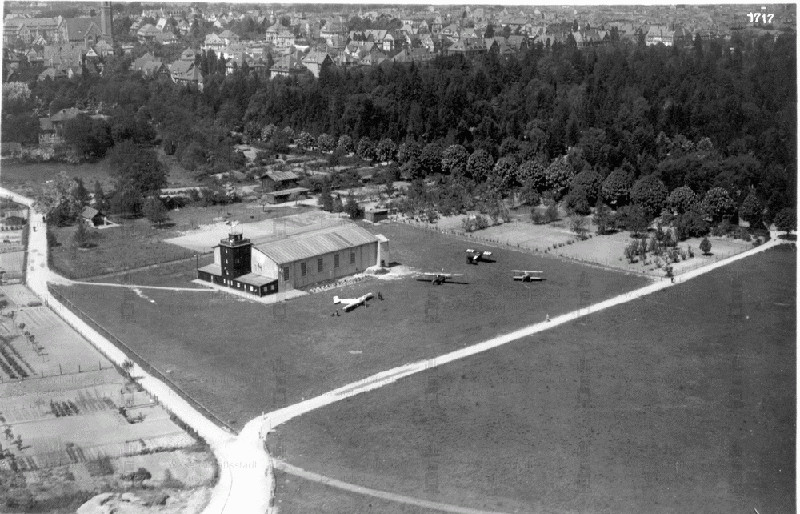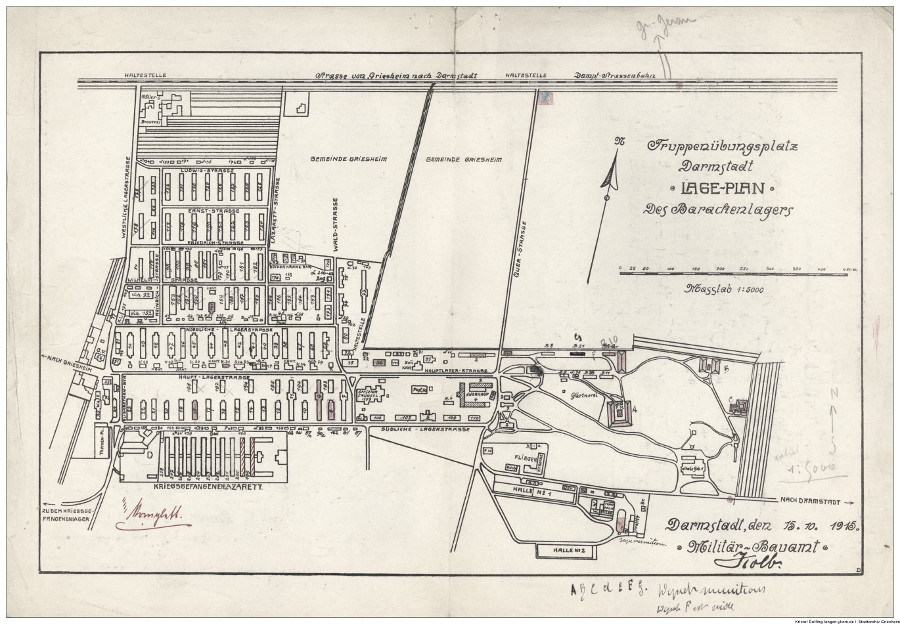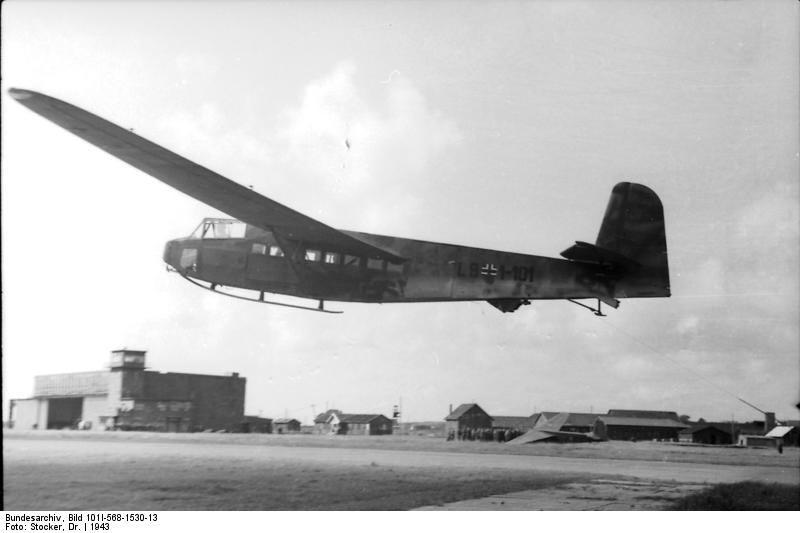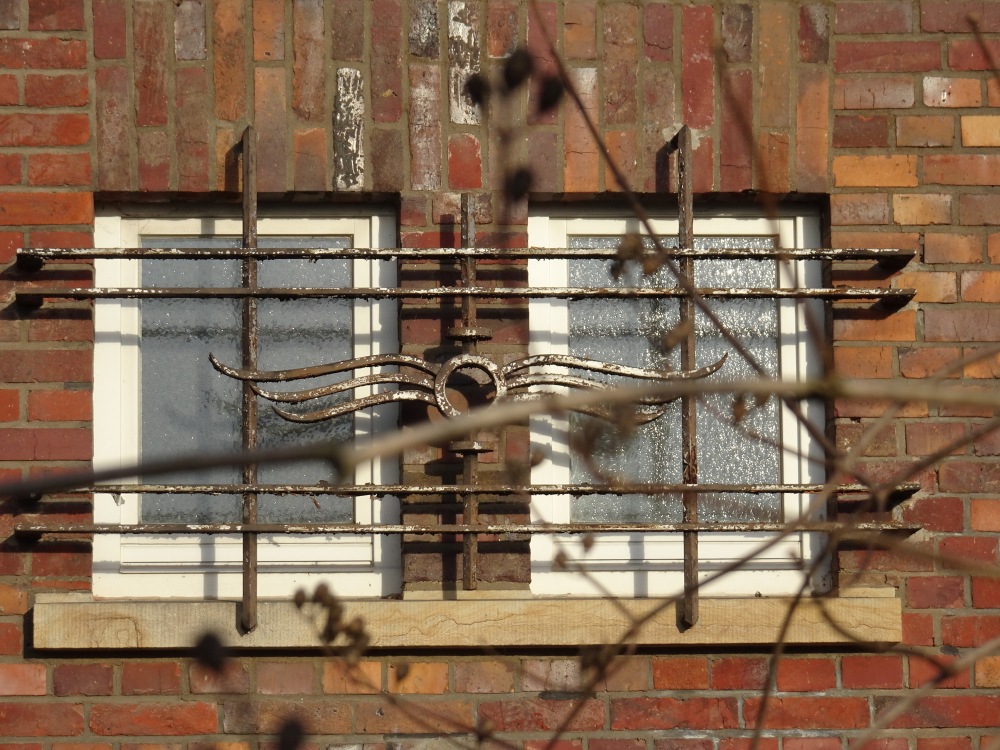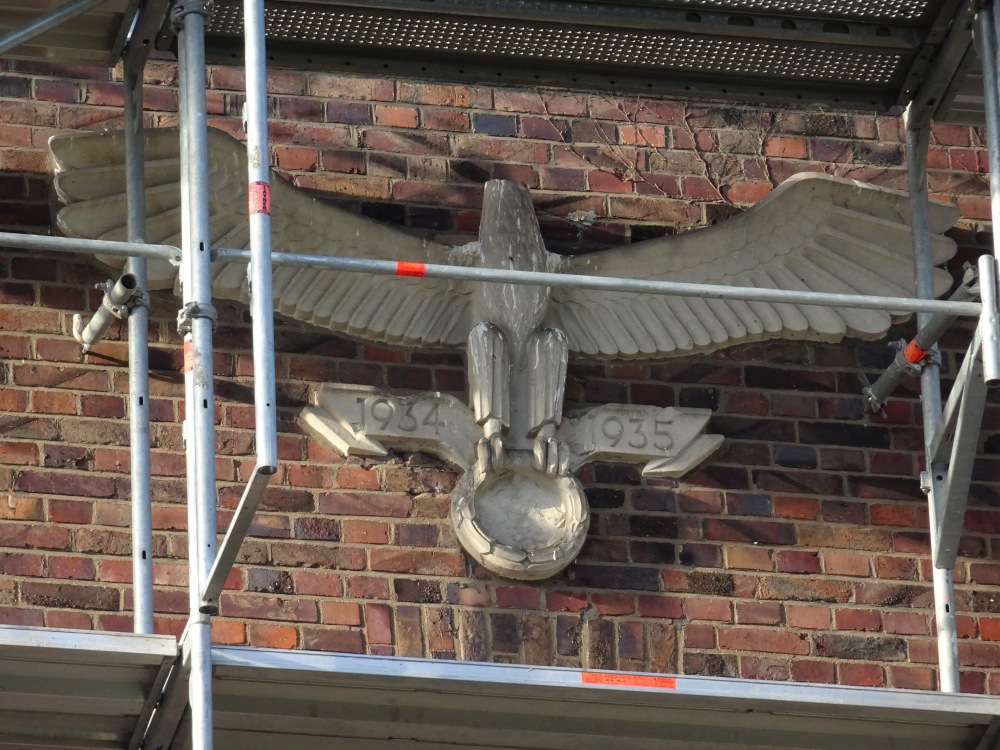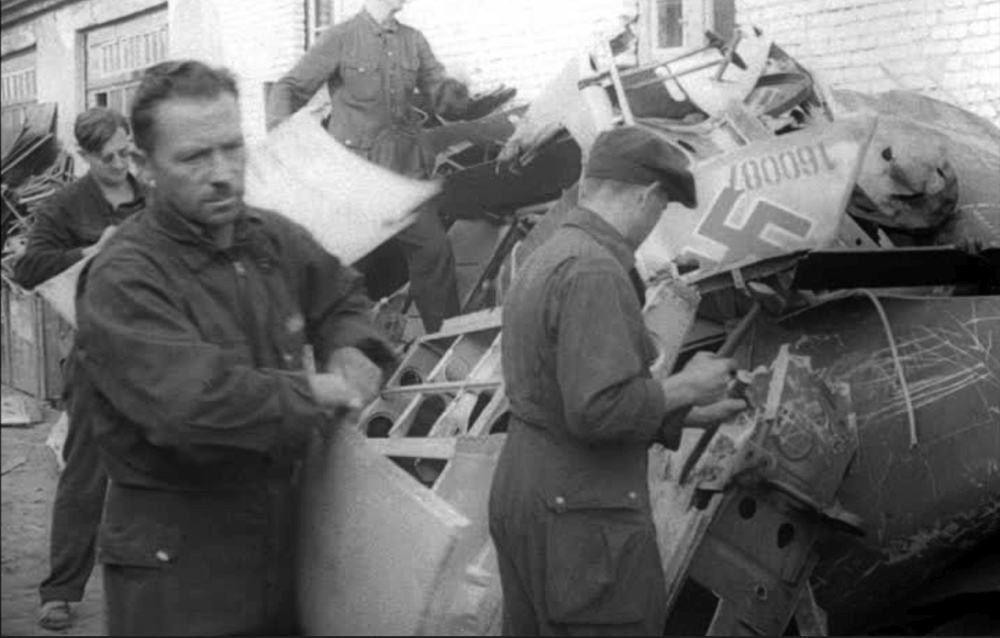August-Euler-Flugplatz in Darmstadt
Which university in Europe has its own airport? The Technical University in Darmstadt has one, partly due to the presence of a special wind tunnel. This remarkably tall building with large fans inside is still located on the airport. It was a design by Dr.-Ing. Nicholas Scheubel which was built in the years 1934-1935, commissioned by the Technical University-Darmstadt-Griesheim. Here, airflow was calculated for military aircraft designs for Nazi Germany. In the final days of World War II, the installation was dismantled and destroyed in order to prevent it from falling into American hands. After the German surrender, the building was taken over by American armed forces, but in 1954 the university got the building back and it was restored to its former glory. To this day, the TU still conducts experiments for the modern aviation industry here.
Definitielijst
- Nazi
- Abbreviation of a national socialist.
Background
Darmstadt’s airport is one of the oldest in Germany. It was named after aviation pioneer August Euler. The versatile Euler (1868-1957) established a takeoff and landing site for airplanes in 1908 on a military training ground near Griesheim. He additionally began an aircraft factory here and built his first powered aircraft in 1908. He had produced around 40 airplanes by 1911. Furthermore, he began giving flying lessons on his self-made creations. Between 1910 and 1918 he trained 75 pilots with his airplanes, most of whom were military aviators. Later, Euler would relocate his activities to Schwanheim, near Frankfurt am Main. On October 1, 1912, the airport was officially transferred to the Prussian army. They built a 131-yard-long and 13-yard-wide aircraft hangar here, which was joined by a second hangar with a length of 175-yard in 1913.
All of this did not go unnoticed by the professors of the Technical University of Darmstadt. They wanted to make use of the facilities and knowledge of aviation techniques provided by August Euler. In 1913 the university began offering the program ‘Luftschifffahrt & Flugtechniek’. The program was later expanded to include courses in aviation meteorology and aerodynamics. From 1921, students formed the so-called Akademische Fliegergruppe, known as Akaflieg. Under the watchful eye of Euler, they developed their own (glider) aircraft and set various records with them. Due to these activities, Darmstadt grew to be the centrum of gliding. In 1927, as we read in the history of the airport, an aeronautical engineer was appointed.
Fifty flying machines
The municipality of Darmstadt also developed an interest in what was happening at Euler’s airfield, but the state of Hessen also saw the potential of having an airport here. Together they invested in a second campus for the TU. This lead to the campus of the Technical University of Darmstadt becoming the first one with its own airport. It became so well-known due to its activities that the 'Süddeutsche Lufthansa' included Darmstadt in its air route to Stuttgart and Munich, later expanding with scheduled flights to Cologne, Hanover and Hamburg. There was a grand celebration when the airship LZ 127 "Graf Zeppelin" landed at the airport in 1930. Two more landings followed on August 11.
In 1933/34, the airfield was relocated to its current location southeast of Griesheim and west of Darmstadt. The municipality became the tenant of the 837193 square yard piece of land, which was owned by the German Reich. The new airport, along with its buildings belonging to the TU, also began receiving more attention from 'Reichsluftfahrtministerium' (RLM) in Berlin. More and more professors started working here, and it didn’t take long before more buildings were erected. A wind tunnel was included in the construction program, which was realised between 1934 and 1935. A new organisation emerged that wished to establish itself here due to the wind tunnel – the 'Deutsche Forschungsanstalt für Segelflug e.V.', abbreviated as DFS. This was a research center for gliders intended for military use. And the students? They were united in the 'Nationalsozialistisches Fliegerkorps' (NSFK).
Definitielijst
- Abteilung
- Usually part of a Regiment and consisting of several companies. The smallest unit that could operate independently and maintain itself. In theory an Abteilung comprised 500-1,000 men.
The DFS 230
As we read earlier, the DFS established itself in Darmstadt. The organization would grow to 780 employees, including several dozen students from the aviation engineering program. The DFS was led by Hans Jacobs (1907-1994), a glider designer and aviation pioneer. Under his leadership aircraft such as the DFS Kranich, Habicht, Weihe and the military type 230 were produced at Darmstadt, among others.
DFS 230 transport glider. Source: BundesarchivThe type 230 was a military glider designed for transport missions. It was developed by Hans Jacobs and his colleagues Heinrich Voepel and Adolf Wanner (both from the aerodynamics department), Ludwig Pieler (static research), and Herbert Lück in Darmstadt. The project began in October 1936, and exactly one year later the first prototype was completed. The aircraft, designated as DFS 230A-1, was tested by Hanna Reitsch, a test pilot for the Luftwaffe. The collaboration between the Nazi flight academy, the Deutsche Luftsportverband (DLV) and the DFS proved to be exceedingly difficult. As a result, the series production did not take place in Darmstadt, but in the workshops of Robert Hartwig in Sonneberg, who was a toy manufacturer in southern Thuringia. Production would later be moved to Brunswick, where 791 DFS 230 gliders were built. Part of the construction was subcontracted to the Gothaer Waggonfabrik (32), Bücker (180) and Erla (178). On May 10 1940, the DFS 230 wrote history when the ‘impregnable’ Belgian fortress of Eben-Emael along the Albert Canal was captured in the early morning by a small team of assault and engineering troops who had landed on the roof of the fort with these gliders. It was the first time a glider had been used for such a purpose, and the action demonstrated that airborne troops could be deployed much more actively in this way than by parachute.
Definitielijst
- collaboration
- Cooperation of the people with the occupying forces, more generally spoken the term for individuals who cooperate with the occupying force is collaborator.
- Luftwaffe
- German air force.
- Nazi
- Abbreviation of a national socialist.
Messerschmitts
In 1939, the DFS relocated to Braunschweig, and the Darmstadt airfield was definitively taken over by the Luftwaffe. Starting from December 1939, Messerschmitt Bf 109E aircraft from I./JG 53 were stationed here, to be joined by Bf 109s and Focke-Wulfs Fw 190s from 2./NJG 11 in March 1944. The first major air raid on the airfield took place on the night of April 10 to 11, 1943. Another significant air raid followed on December 24, 1944, carried out by the 8th Air Force with 189 bombers. On March 23, 1945, all buildings and technical installations on the airfield were blown up by the remaining German troops.
Messerschmitt Bf 109E-3 from I./JG 53 in Darmstadt. Source: Bundesarchiv KoblenzAfter World War II, the Americans took over control of the airfield. A casino was established in the wind tunnel until 1954, but the building would be transferred to the TU a year later. It is still in use for scientific purposes to this day. The airfield is now used for civil aviation under the name August-Euler-Flugplatz.
Definitielijst
- Luftwaffe
- German air force.
- raid
- Fast military raid in enemy territory
Information
- Article by:
- Pieter van Wijngaarden
- Translated by:
- Kamran Gasimov
- Published on:
- 19-01-2025
- Feedback?
- Send it!
Related sights
Sources
- Hessisches Staatsarchiv Darmstadt
- Stadtsarchiv Stadt Darmstadt
